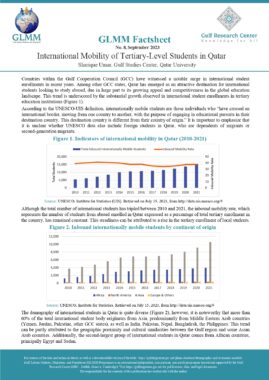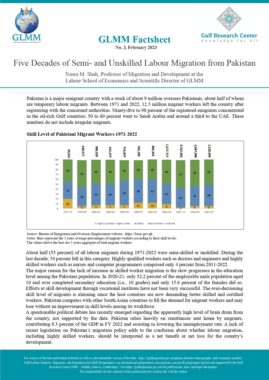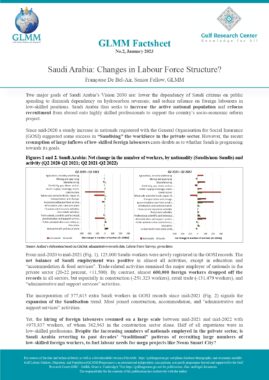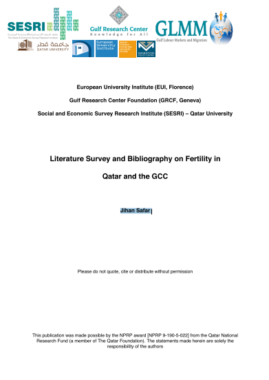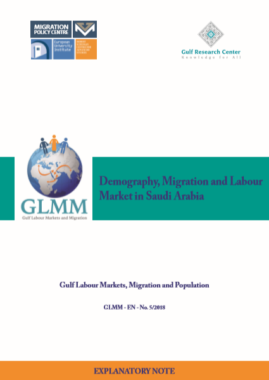Qatar: Economically active population (aged 15 years and above) by nationality (Qatari/non-Qatari), sex and employment status (2022)
| Qataris | Non-Qataris | Total | |||||||
| Males | Females | Total | Males | Females | Total | Males | Females | Total | |
| Employer | 2,780 | 157 | 2,937 | 3,267 | 355 | 3,622 | 6,047 | 512 | 6,559 |
| Own account worker | 92 | 0 | 92 | 885 | 75 | 960 | 977 | 75 | 1,052 |
| Employee | 69,276 | 48,527 | 117,803 | 1,701,144 | 303,798 | 2,004,942 | 1,770,420 | 352,325 | 2,122,745 |
| Total | 72,148 | 48,684 | 120,832 | 1,705,296 | 304,228 | 2,009,524 | 1,777,444 | 352,912 | 2,130,356 |
Source: Annual Bulletin of Labour Force Sample Survey 2022
ANNEXED NOTE
- Technical Notes and Definitions
The data is taken from Labour Force Survey 2022 (yearly synthesis)
Sampling frame: Population Census 2020.
Sample size: 65,253 persons, in 10,560 households: 1- Qatari households; 2- Non-Qatari regular (non-collective) households; 3- Non-Qatari small collective households or labour gatherings (2 – 6 persons); 4- Non-Qatari large collective households or large labour gatherings (7 persons or more).
The collective households are a group of persons not related to each other and sharing living conditions in a residential unit, I.e. labour camps, students living in boarding schools, nurses in hospitals… etc. The survey covered the small collective households (includes less than 7 persons) and large collective households (includes 7 persons or more).
Data Collection: The sample was divided into equal parts to collect data monthly. Each month 1/3 of the quarterly data were collected during the first two weeks of the month.
Reference period for the labour force data: the week prior to data collection day.
The survey did not cover short periods accommodation, i.e. hotels.
The present data includes active population, i.e. employed and unemployed. It does not include persons seeking work for the first time.
Classification used: The International Classification of Status in Employment (ICSE)
- a) Employers are those workers who, working on their own account or with one or a few partners, hold the type of job defined as a “self-employment” and have engaged one or more persons to work for them in their business as “employees”.
- b) Own-account workers are those workers who, working on their own account or with one or more partners, hold the type of job defined as a “self-employment”, and have not engaged on a continuous basis any “employees”.
- c) Employees are all those workers who hold the type of job defined as “paid employment”.
- Institution which provides data
Planning and Statistics Authority
https://www.psa.gov.qa/en/Pages/default.aspx
- Data availability
Labour Force Surveys (yearly and quarterly data) can be downloaded from PSA’s website, in PDF and Excel format:
https://www.psa.gov.qa/en/statistics1/pages/topicslisting.aspx?parent=Social&child=LaborForce
Last date of access: November 2023.
GLMM and GRC cannot guarantee that the link to access the source will not change; that the information will not be removed from the website it was obtained from; that no geo-blockages will be imposed; or that the information will not be available for any another reason.
Keywords: Qatar, Labour Market, Employment, Female Employment, National & Foreign Labour, National Labour, Foreign Labour
Similar Posts:
- Qatar: Economically active population aged 15 and above by nationality (Qatari/ non-Qatari), sex and employment status (2017)
- Qatar: Economically active population aged 15 and above by nationality (Qatari/ non-Qatari), sex and employment status (2018)
- Qatar: Employed population (15 years and above) by nationality (Qatari/ non-Qatari), sex and occupation (2017)
- Qatar: Employed population (15 years and above) by nationality (Qatari/ non-Qatari), sex, occupation and average weekly work hours (2017)
- Qatar: Employed population (aged 15 and above) by nationality (Qatari / non-Qatari), sex, occupation and average weekly work hours (2022)
Tags: Employment, Female Employment, Foreign Labour, Labour Market, National and Foreign Labour, National Labour, Qatar

































